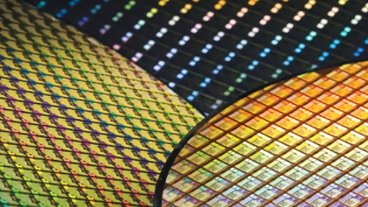Apple may be underselling the performance of its new A15 Bionic chip, with initial in-depth benchmarks and analysis of the iPhone 13 SoC pointing to it having considerable power compared to its rivals, and a hefty improvement on the A14.
During Apple's iPhone 13 launch, the company promoted the A15 in an unusual way, namely by comparing it against its competition rather than previous generations. Apple mentioned the A15 Bionic was 50% faster than the leading rival chips, with 30% better graphical performance for the four-core GPU, 50% for the five-core, but not how much it improved on the A14 Bionic.
An in-depth breakdown of the changes in the A15 by Anandtech reveals that there are considerable improvements in performance over the previous year's SoC design. This starts with Apple's use of two new CPU microarchitectures for its high-performance and high-efficiency CPU cores.
Just on the cores, the maximum frequency per core in the A15 reached 3,240Mhz, versus the 2,998 maximum of the A14. The report found an 8% improvement in single-core performance for the two-core cluster, but when both performance cores are running, there's a 10% average improvement.
The efficiency cores also saw performance improvements, going up 10.5% over the A15 with a maximum frequency of 2,016MHz vs 1,823MHz.
A change in the system cache has also helped performance, with Apple moving up from 16MB in the A13 and A14 to 32GB in the A15. Latency tests confirmed the system cache has increased, keeping memory accesses on the same silicon for longer instead of searching DRAM.
Apple didn't mention changes to the L2 cache of the performance cores, which increased by 50% to 12MB, matching the size of the M1's version. The access latency is also up from 16 cycles to 18, while the A15 is also capable of one-cycle accesses to cache lines in L1 cache versus three cycles on the A14.
The efficiency cores retain their 64KB L1D and 4MB shared L2 caches, but the L2 TLB has increased to 2,048 entries to cover up to 32MB. There's also faster DRAM access for the efficiency cores.
In performance tests, the A15 is seen to improve on various processing tasks "across the board" against the A14 for the performance cores, meanwhile power consumption for those same tasks on those cores are also lower. It is reckoned that the A15's performance cores improved energy efficiency by 17% on its peak performance versus the A14.
The efficiency cores also see performance improvements in their own right, with 28% increased speed while keeping efficiency flat.
"Compared to the competition, the A15 isn't 50% faster as Apple claims, but rather 62% faster," the report reasons. "While Apple's larger cores are more power-hungry, they're still a lot more energy-efficient."
Pre-release benchmarks using Geekbench pointed to a general 21% CPU gain in the A15 over the A14.
On the GPU side, the 3DMark Wild Life test saw the four-core GPU in the A15 improving 14% over the A14, while the five-core version managed a 30% improvement. At peak performance, the five core GPU is "essentially double that of its nearest competitor," with Apple "likely low-balling things again."
The improvements grew in the GFXBench Aztec High test, with a 46% improvement in the 5-core, 19% in the four-core.
Early benchmarks initially claimed the A13 would provide a 55% graphical improvement over the A14.
Despite the improvements, the report points out that there are still thermal limitations at play, with throttling impacting the A15 in the Pro models more than the standard iPhone 13. Anandtech suggests this could be down to a new PCB design that puts the SOC in the middle of the PCB "sandwich" rather than the outside, with the latter improving thermal transfers to a heat spreader.
In summarizing the changes, the report says the A15 isn't a "brute force iteration we've become used to from Apple in recent years," but it does include "substantial generational gains that allow it to be a notably better SoC than the A14."
 Malcolm Owen
Malcolm Owen







-m.jpg)






 Marko Zivkovic
Marko Zivkovic
 Wesley Hilliard
Wesley Hilliard
 Amber Neely
Amber Neely


 William Gallagher
William Gallagher

 Christine McKee
Christine McKee




-m.jpg)



13 Comments
There are so many types of chip specs that can be touted, but ultimately it's the experience that these can deliver which is important.
The A-series offers a wide range of additional processing capabilities which are not easily measured by benchmarking software. (e.g. enhancements to the AI capabilities).
Apple can't go on stage and say the device is x% faster because individual results will vary by the developer's skill in leveraging the chip's capabilities. Apple can make broad statements about improved performance - and this is what they continue to do, they don't want to be bogged down in another meaningless "MHz race". It's not particularly useful to keep reminding the audience that the device is faster than before, that is a given and isn't a novelty worth spending much time on.
Apple take a different approach with their pro-hardware because performance and capability are the reasons for purchase, here you will see a lot of detailed comparisons in commonly used pro titles, as well as details like compatibility with systems/racks/vesa mounts and so on.
The CPUs are now so fast that the generational improvements aren't really noticeable in daily use anyway. If you were number crunching then a nn% speed increase actually makes a tangible difference, but an app launching in 0.51 seconds instead of 0.6 isn't perceivable.
Well, this bodes well for M2 and M2x iterations of the Mac SoCs ... higher efficiencies and larger caches mean you can stuff more cores in within a given thermal envelope.
I suspect that M*x variants might shuttle GPU cores off into chipsets - we'll hopefully see soon - so unbounded GPU cores can achieve higher performance levels if physically spaced apart under some kind of heat spreader.
Higher efficiency E-cores mean that you can easily double the number to handle more mundane tasks, and having no Qualcomm modems in there contributing to heating should also improve performance and thermal capacity.
Apple trouncing ARM, Samsung and Qualcomm again, as usual.